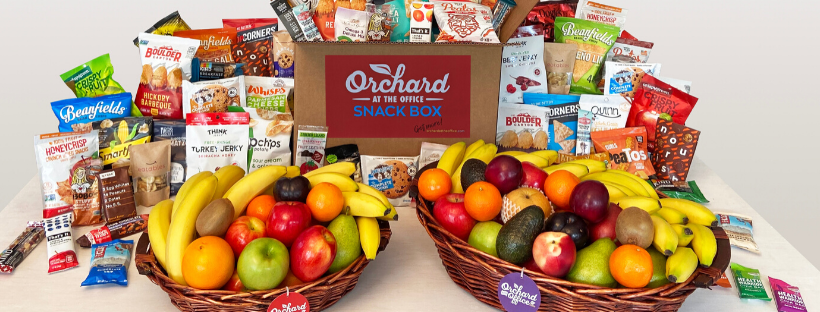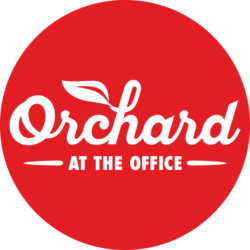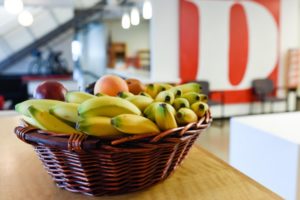An office fruit delivery company’s value proposition keeps them lean and hungry.
Richardson-based ORCHARD At The OFFICE started in October 2010 with a single and simple concept: delivering fresh fruit to businesses in the Dallas / Fort Worth Metroplex. It’s proved to be a winning idea and we’ve long been the largest office fruit delivery service in north Texas. Our hundreds of clients have staff sizes ranging from two to two thousand, and we treat each of their regular deliveries with the same care we’d show our best friends.
As the Operations Wiseapple, I’ve gotten to see firsthand what’s worked for us, and thought about what might be useful for other small businesses in any industry. It would be accurate to say the keys to our success have been “perseverance”, “focus”, or “determination”, but these generalities do not inherently guarantee longevity. Many businesses founded on good ideas fail. The entrepreneurs involved had loads of determination and focus, and persevered until the bitter end. What’s been the difference for us, in a practical sense?
While there are many answers, some of which I’m too involved to divine, a primary principle I can share involves responsible use of budgets. In our office, we call it getting “the best banana for the buck”. Quite simply, when dealing with any expense, we ask ourselves “will this improve the quality of our customer’s experience?”
A question like this can cause one to be either miserly or extravagant. It can result in spending an exorbitant amount of time and dime attempting to quantify the effects of spending. (“Did customer’s perceptions of our service increase or decrease when our representatives wore salmon-colored collared shirts as opposed to navy?”) I can’t speak to what’s right for every business, but I can freely share our own experience, based on trial-and-error, that’s helped us walk an acceptable middle path.
Aesthetic Value: A Modest-But-Inviting Workplace
During the boom-and-bust of the “dot.com bubble” in the late 1990s, one trend stood out to me more than any other: given a tremendous amount of speculative seed capital, startup companies would rent lavish office space, often laden with sleek Scandinavian furniture, and spare no expense to make their working environment impressive to customers and inviting to talented employees. Of course, most of these web-based firms hadn’t actually worked out monetization, and the predictable result, as history illustrates, was that most went belly-up, sooner than later.
Our takeaway from this was to make sure we found the line between an overly-Spartan and ostentatious workspace. To give a few practical examples: do we need to spend money hiring professionals to stencil our logo on the walls? Not for us. We’re fairly certain our employees know where they are and who they work for. Do we really need nice furniture or fancy artwork? To these, we answered: yes, to a point. We do want our employees to feel comfortable – simple amenities like a couch to relax or healthy snacks (including the fresh fruit we supply) have been shown in studies to create more productive employees. But we have found no added value in buying expensive new furniture, and at the same time we didn’t want to chuck some smoky craigslist abomination of a sofa into a dimly-lit “break room”. Instead, we simply brought surplus items from home and encouraged staff to do the same. It’s created a cozy, eclectic environment that makes hours seem easier and lets dollars go farther.
Driven by Principle: Spreading the Word
On the one hand, a family business must be realistic about its budget. On the other hand, if it only spends like – or thinks like – a family business, that’s all it will ever be. ORCHARD At The OFFICE wants to make sure people are aware of who we are and what we do, but how do we best accomplish that?
This is where the “quality of experience” yardstick comes into play. It would not, in our estimation, help existing or prospective customers enjoy our fruit more if we invested in wraps for our delivery vehicles. Instead, that money is invested in making sure the vehicles we own work, and reliably. Money spent on maintenance goes much farther than money spent on décor, though of course, the two are not mutually exclusive. Additionally, ORCHARD At The OFFICE made the decision many years ago that it would make more sense to pay for someone else’s well-maintained vehicles than try to own a fleet of our own, and so we rent vans as needed throughout the week. We’ve found it works better than asking drivers to put mileage on their own cars (to which they may not apply the same maintenance standards), while keeping us from having to pay for an abundance of vehicles that don’t need to be in service on a daily basis.
So this frees up some money – but where to use it? Our goal isn’t just to have minimal expense, and we still need to promote it. For us, there’s been a variety of methods, but one that’s been of benefit to us (and would be to many others) has been to look to contribute to civic organizations with goals similar to our own.
A primary example is our partnership with the Dallas Running Club, who host a race nearly every month. We’ve been supplying bananas for the athletes to enjoy at the finish line for quite some time, and the exposure has been invaluable. It’s an obvious example of a win-win, and we’re happy to know that regardless of the outcome, we’ve helped contribute to a healthier Dallas! After all, that is the bedrock upon which ORCHARD At The OFFICE was built.
These specific instances may be unique to us, but they are again meant to be illustrative of how the principle of “best banana for the buck” (or “best product for the dollar”, or “best service per cent”) can be applied to all facets of a business, great or small.
Use the Entire Apple
I cannot verify if any group of people, indigenous or otherwise, made use of every bit of any animal they hunted. I can only say that for our business, the idea of repurposing as much as possible has helped us control costs and aided in budget decisions.
To give one example: the Jazz apples we use arrive in cardboard boxes. Obviously, we sell the apples, but what to do with the boxes? The answer was quite simple: for those who wanted a greater quantity of fruit but didn’t require the aesthetic appeal of our trademark baskets, we offered the Office Select Box. The produce is all still hand-selected to guarantee quality, but we don’t spend the money on presentation in a fancy box emblazoned with our logo. This helps us keep the cost down, and instead put the packaging money into buying the baskets for those who want them.
This idea holds true with all our fruit boxes – we use them, as is, for shipping and distribution wherever possible. We let the quality of the product be our brand, and in that regard, we spare little expense. The aforementioned Jazz apples cost considerably more than the thick-skinned Red Delicious doled out to you in the school cafeteria…and with good reason. They’re objectively better quality, and thus meet our criteria of “best banana for the buck”.
Perhaps your organization operates under an entirely different premise. You may read every sentence I’ve written and think “we would do the exact opposite”. If that is your reaction, I will still feel I have done a service as my goal is not to seek agreement, but to get small business managers thinking. Considering the “how” and “why” of success allows us to continue down the right path while perhaps taking corrective steps. I certainly encourage other entrepreneurs (or those who work alongside them, as I do) to put their own thoughts and ideas to paper, ideally after enjoying some fresh fruit from ORCHARD At The OFFICE!
To inquire about fresh fruit delivery for your office, visit http://orchardattheoffice.com, e-mail getfruit@orchardattheoffice.com or call 972.295.9091.


